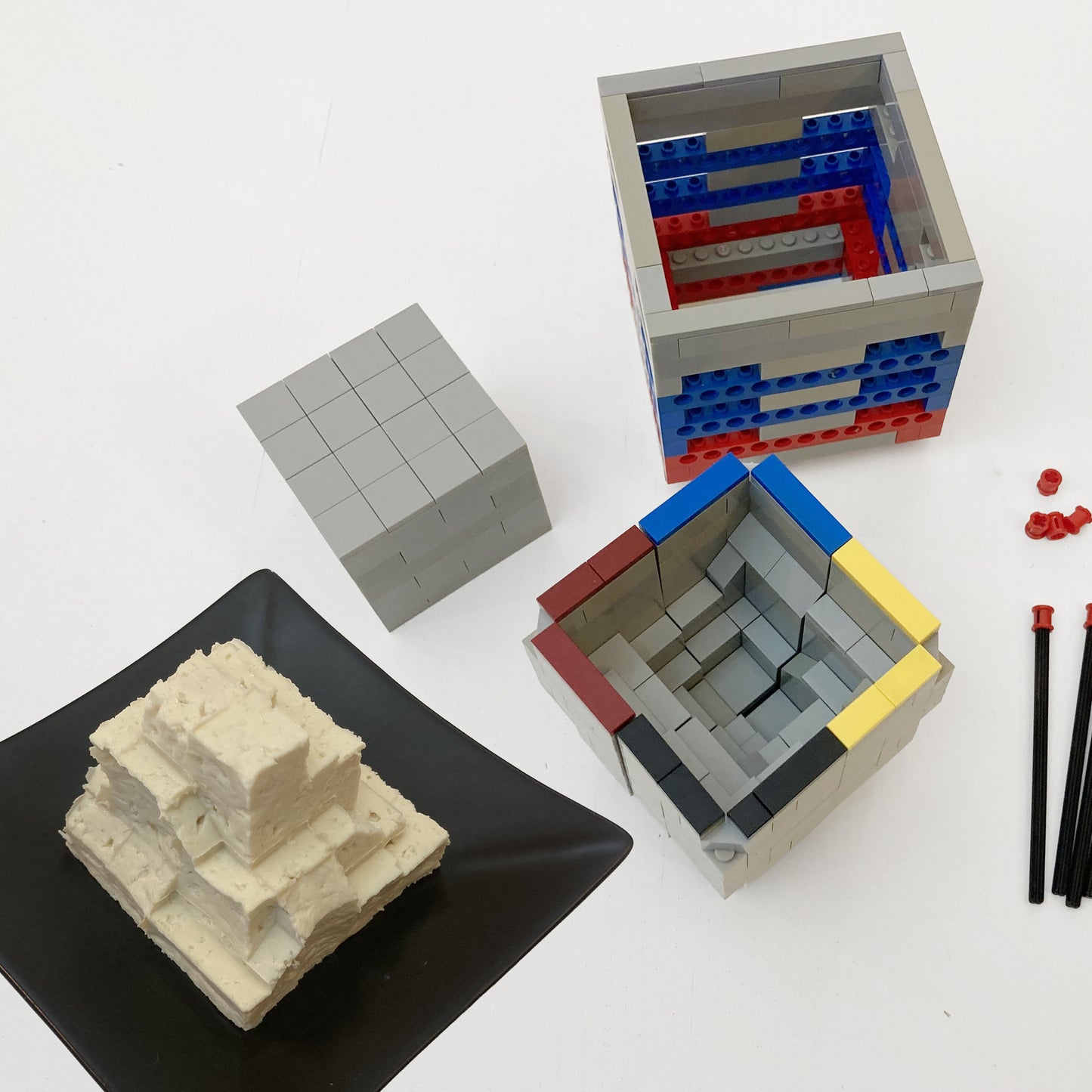Toy Brick Cooking Aids
Share
Health and Safety
By Toy Bricks, you probably know exactly what I mean. I’m talking about those classic interlocking blocks we all played with. A well-known Scandinavian brand might come to mind.
The real question is: is it safe to use them with food?
Technically speaking, they are not certified as food grade, neither in terms of material nor manufacturing process. That said, the manufacturer does state on its website that these bricks are tested to be safe if chewed by toddlers. That’s comforting, but whether or not to use them is your call.
Precautions
If you do decide to use them, here are the precautions I take that you may want to follow as well:
- Stick to that one well-known brand, the one with the longest track record.
- Always wash the bricks thoroughly with dish soap and warm water before and after each use.
- Let them dry completely on a clean towel, ideally with a fan.
- Use them only for brief contact with food.
- Never use them as bowls, serving plates, or utensils.
- Do not expose them to high heat.
- Do not use them with hot food.
- Do not leave food sitting in them for extended periods.
- I only use them in personal, experimental contexts, never in commercial or public situations.
- When possible, I line them with parchment paper or food-safe plastic film.
Applications
1. Toy Brick Unit
To work with precision, you need a consistent unit of measurement. In Canada, where I live, the official system is metric. But with our proximity to the US, we constantly juggle between metric and imperial. For example, most of our construction materials are measured in feet and inches. We are probably one of the only places that uses both systems daily.
To keep it simple, I decided to use a third system: what I call the Toy Brick Unit (TBU).
Unfortunately, the height-to-width-to-depth ratio of the pieces is not ideal. It takes more than one unit to form a perfect cube. Still, they are incredibly useful because I can use them both as guides and as measuring tools.

2. Cutting Guides and Templates
If you place a complex shape or a multi-part structure on top of a slab of food, you can use the bricks to trace, engrave reference marks, or even cut directly using the brick edges as guides.

3. Construction Aids
While assembling food structures, I sometimes use brick assemblies like square rulers. They help hold elements at right angles or keep them parallel. I also use them as temporary support structures during building.

4. Molds
I often use them when I want to test a shape through molding, before investing time in a proper production mold. They’re great for fast prototyping. You can make simple cookie-cutter–style molds or build complex 3D ones. The best part is you can take the bricks apart after molding to make demolding easier.

5. Tools
Just like with molds, the bricks help me prototype custom tools quickly. And by tools, I mean anything from shaping jigs to fully motorized contraptions.















